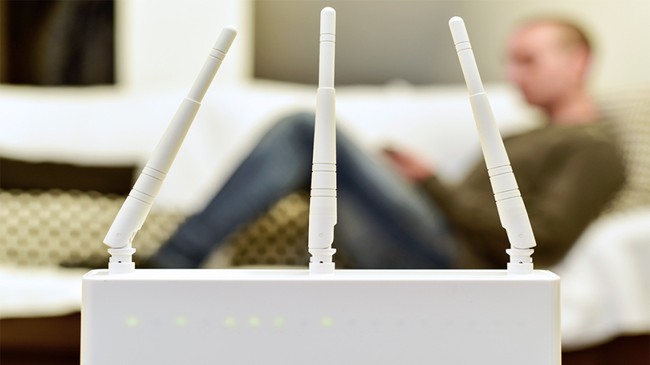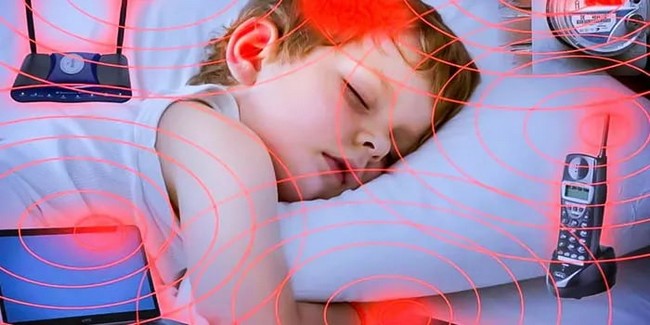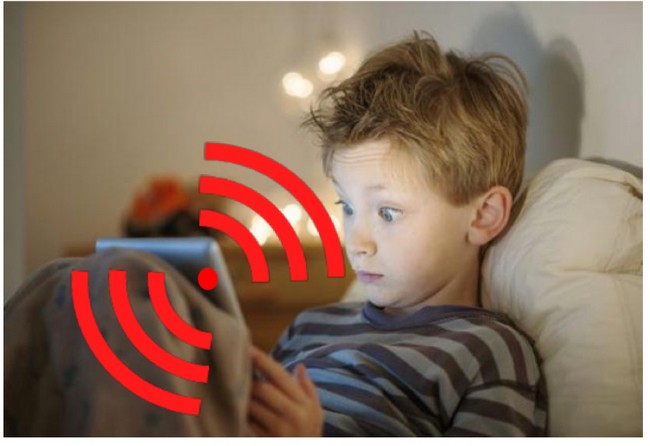Is Wi-Fi Harmful To The Baby? Harmful Effects Of Wi-Fi Waves On Children’s Physical And Mental Health
nMaybe You Have Heard This Case From All Corners That WiFi Is Harmful To Human Health, Especially For Children.
But what is the future of WiFi technology? Has there been a date that raises this doubt about it? Does WiFi affect the health of babies and children
? In this article, we examine the effects of WiFi on babies and provide ways to reduce or prevent the effects of WiFi on children.
Introduction
The WiFi communication protocol is one of the wonders of the technological age that allows us to communicate wirelessly and transfer data in one of the most straightforward and effortless ways possible. Today, WiFi waves are easily configured and supplied in many public and private places, such as homes, schools, offices, airports, cafes, and hotels. We use it to perform various tasks such as connecting to the Internet to search for information, sending and receiving messages, voice calls, and videos, downloading and playing multimedia files, playing online games, and shopping.
But is WiFi harmful for babies and children? Can WiFi waves hurt the health of babies and children’s bodies and minds? These are the questions that many parents, teachers, doctors, and researchers are concerned about. In this article, we will answer these questions and examine the harmful effects of WiFi waves on the health of babies and children. We have also provided solutions to reduce or prevent the risks of WiFi waves for babies and children, and we are looking for the answer to the question: how should we protect our children from WiFi radiation?

To answer these questions, we first need to know how WiFi works and from a related device such as a modem, router, or WiFi access point. What kind of waves are emitted? Of course, in this article, we try to answer various uncertainties by relying on scientific information and related research and investigating the effects of WiFi waves on the health of babies and children. Finally, we will suggest methods to prevent the dangers of WiFi waves for babies and children.
The importance of investigating the effect of WiFi waves on the health of infants and children
Babies and children are among the sensitive and vulnerable groups against environmental influences. This group’s physical and mental health is strongly influenced by the growth and development of the brain, immune system, hormonal system, sleep, and behavior. Each of these factors, in turn, is influenced by the surrounding atmosphere, environment, and culture of their place of residence.
One of the environmental factors that can affect the health of babies and children is electromagnetic radiation. These radiations are emitted from various sources such as power transmission lines, electronic devices, mobile phones, and wave-generating devices such as modems, routers, and WiFi access points. The truth is that not all radiation harms humans; instead, it is because of the benefits and facilities they provide that we use them. But besides these benefits, there are consequences in the use of electromagnetic waves that can affect the human body, from simple headaches and muscle pain to even cancer.
Therefore, we need to know about the effect of WiFi on babies and children and find ways to reduce or prevent their risks. This awareness can help us maintain babies’ and children’s physical and mental health and provide them a better future.
In the continuation of this article, to check what kind of waves from devices based on a WiFi connection and the published mobile phone and how they work, whether there is scientific and statistical evidence about the positive or negative effects of WiFi waves on the health of infants and children, and what strategies can be taken to reduce or prevent the risks of WiFi waves for infants and children, we pay.

How do WiFi waves work?
Radio waves are among the electromagnetic radiations composed of an electric field and a magnetic field that can propagate in space and its various tissues. Radio waves can pass through different media, such as air, water, metals, and glass.
In this context, WiFi waves are a wireless communication technology that uses microwave electromagnetic radiation to transmit signals and data. Microwaves are radio waves that have high frequency and short wavelength. The frequency of microwaves varies between 300 MHz and 300 GHz, and WiFi waves use 2.4 and 5 GHz frequencies. These waves are classified as non-ionizing radiation. This means these waves lack the energy to break molecular bonds and are generally safe for health.
Some research has shown that WiFi waves can cause an increase in the temperature of living tissues, physiological changes, production of free radicals, genetic changes, neurological disorders, and even cancer in the case of long-term continuation and exacerbation. These effects can pose more risks to babies and children because their bodies are growing fast, and their organisms are more sensitive and weaker.

WiFi uses a wireless router or modem to transmit signal and data. A wireless router or modem is an electronic device that connects to an Internet source such as cable, DSLOr optical fiber is connected. A wireless router or modem converts the internet signal and data into microwaves and broadcasts them in space. These waves can be received by wireless devices such as mobile phones, tablets, laptops, computers, televisions, cameras, etc. Wireless devices can also convert microwaves into Internet signals and data and send them to a wireless router or modem. This process allows wireless devices to communicate with each other and the Internet.
The essence of this issue is the beginning of the dangers of the waves for the human body. In fact, because the intensity of the electromagnetic field increases when approaching these devices, the chances of harming the body and creating destructive effects increase in the places where these devices are installed.

The effect of WiFi on babies and children
A human baby is born with an incomplete brain. Part of the brain development process takes place outside the mother’s body. as you know. The brains of babies and children have a different structure and function from the brains of adults. Because the cells and nerve connections are being formed and adjusted, their response to environmental stimuli differs from that of adults. Any changes in these stimuli can be evaluated positively or negatively by the brain and affect the growth and development of the brain of babies and children.
The effect of WiFi waves on the baby is that WiFi waves are part of the environmental stimuli and can hurt the growth and development of the brains of babies and children. Some researchers have shown that WiFi waves can reduce the number and volume of nerve cells, disrupt the connections between them, change the electrical and chemical activity of the brain, and increase oxidative stress, inflammation, and apoptosis (programmed cell death).
The effect of WiFi on babies and children can lead to a decrease in their ability to learn, memory, attention, creativity, intelligence, and emotions. In addition, there are consequences such as the possibility of developing neurological diseases such as autism, attention deficit hyperactivity disorder or ADHD, increased mood disorders, anxiety disorders, sleep disorders, and brain cancer.

For example, in this context, the results of a study from the Interphone Institute in 2010 were published in what is by far the most extensive study to date on the impact and relationship between RF radiation. On the body (this study talks explicitly about cell phones, but it’s the same type of radiation as from a WiFi router is emitted) and shows adverse effects on health.
In summary, this valuable study showed us that:
- If you use your cell phone for 30 minutes a day, your risk of developing a brain tumor increases by 40% after ten years.
- If you’ve used your phone for 1,640 hours in your lifetime, you’re considered “high risk.” This “high-risk group” is two times more likely to develop a brain tumor in the temporal lobe. When you hold your cell phone close to your head, the temporal lobe is the area of the brain closest to the antenna.
- When brain tumors were found in the brains of some people in the experimental group in the study, they were twice as likely to be found on the side of the head where the cell phone was used.
Also, the research that was published in 2018 in Environmental Research magazine investigated the effect of WiFi waves on the growth and development of the brain of mouse embryos
. This research showed that WiFi waves have caused a decrease in the number and volume of nerve cells, disrupted connections between them, changed the electrical and chemical activity of the brain, and increased oxidative stress, inflammation, and apoptosis in mice. These effects have decreased the mouse embryos’ learning ability, memory, and emotions, leaving them behind their peers in normal development.
Another study published in 2019 in the International Journal of Radiation Biology investigated the effect of WiFi waves on newborn mice’s brain growth and development. The results of this research showed the same effects as the previous research. They stated that WiFi waves cause a decrease in the number and volume of nerve cells, disruption of the connections between them, changes in the electrical and chemical activity of the brain, and an increase in oxidative stress, inflammation, and apoptosis in laboratory mice.
Now that we know the effect of WiFi on the development of babies and children, the question arises: how do we reduce the risks of WiFi for children and babies?
Ways to prevent WiFi complications for children and babies
WiFi waves are electromagnetic radiation that can negatively affect the health of babies and children. Therefore, we need to find ways to reduce or prevent the effects of WiFi on children. In this section, we will discuss the four main ways to reduce the duration and distance of exposure to WiFi waves: using protective devices or blocking WiFi waves, choosing the right places to put the WiFi router or mobile phone, and increasing water consumption. We examine foods containing antioxidants and vitamins.

Reducing the duration and distance of exposure to WiFi waves
One of the simple and effective ways to reduce the effects of WiFi on children and babies is to reduce the duration and distance of their exposure. This method works based on the engineering principle: “The greater the distance from the radiation source and the shorter the duration of exposure, the lower the amount of radiation received.” To implement this method, we can do the following:
Limit the time you use wireless devices.
It is better to manage the use time of devices that work with radio waves, such as mobile phones, tablets, laptops, computers, televisions, cameras, etc., effectively for babies and children. For example, we can reduce screen time to a maximum of one hour per day for children over two years old and almost zero for infants and children under two years old.
Keeping wireless devices away from the body and head of babies and children
For example, we can use hands-free speakers and Bluetooth for voice and video calls to reduce the effect of WiFi on the baby. We should also avoid putting mobile phones in pockets or bags or near the ears of babies and children.
Turn off wireless devices when not in use.
For example, we can put the mobile phone in airplane mode when we don’t want to make or receive calls. In this context, it is better to turn off the WiFi router when the Internet is not needed, such as at night or when we are out of the house.

Using protective devices or blocking WiFi waves
Another method we can use to reduce the effects of WiFi on children and babies is to use protective devices or block WiFi waves. These devices can prevent or minimize WiFi waves from reaching the body and head of infants and children. To implement this method, we can do the following:
Using protective covers for mobile phones, tablets, laptops, etc
These covers can be made of different materials such as plastic, leather, metal, natural and synthetic fibers. Some of these covers have layers of wave-blocking materials such as aluminum foil, carbon, silver, etc. These covers can somewhat reduce the effect of WiFi on babies and children. However, it should be noted that these covers may reduce the quality of internet signal and data.
Using WiFi-blocking devices
These devices can block WiFi waves in a specific area, such as a bedroom, playground, or school for babies and children. These devices work by sending jamming waves with the same frequency as WiFi waves, making it impossible to receive and send internet signals and data. These devices can significantly reduce WiFi waves in the desired range and protect the health of babies and children. However, it should be noted that these devices may conflict with local laws and regulations and may be prohibited or limited.
Choosing the right places to place the WiFi router or mobile phone
Another method we can use to reduce the risks of WiFi waves for babies and children is to choose the right places to put the WiFi router or mobile phone. This method works based on the engineering principle: “The greater the distance from the source of radiation, the lower the amount of radiation received.” To implement this method, we can do the following:
Removing the WiFi modem and router from the children’s room
Placing the WiFi router in places far from bedrooms, playgrounds, or schools for babies and children effectively reduces the risks of these waves. For example, we can place the WiFi router in the study room, storage room, or balcony. We can also avoid setting the WiFi router near other electronic devices, such as microwaves, TVs, radios, etc., because these devices can interfere with the Internet signal and data.

The farther the phone is from the child, the better
We are placing mobile phones in places far from the body and head of babies and children. For example, we can put the mobile phone on a table, dresser or bag. We can also avoid placing mobile phones, credit cards, etc., near the watch because these objects can interfere with the Internet signal and data.
Increasing consumption of water and foods containing antioxidants and vitamins
Another method we can use to reduce the effects of WiFi on children and babies is to increase the consumption of water and foods containing antioxidants and vitamins. This method works based on the biological principle that “water and foods containing antioxidants and vitamins can maintain the health of cells and tissues and prevent oxidative and inflammatory damage.” To implement this method, we can do the following:
Increase water consumption for babies and children
Water is one of the essential substances for life, which helps to maintain the balance of water and electrolytes, transport and eliminate nutrients and toxins, regulate temperature and blood pressure, keep the smoothness of joints, etc. Water can help reduce the effects of WiFi on babies and living tissues.
For example, water can reduce tissue temperature, preventing thermal damage. Also, water can reduce free radicals and prevent oxidative damage. The amount of water consumed by babies and children depends on age, weight, physical activity, temperature, and humidity of the environment. In general, we can say that babies and children should drink at least 1.5 liters of water per day.
Increasing consumption of foods containing antioxidants and vitamins
Antioxidants and vitamins are substances that can protect cells and tissues against oxidative and inflammatory damage. Antioxidants and vitamins can help reduce the adverse effects of WiFi waves on living tissues and WiFi complications for children. For example, antioxidants can reduce free radicals and prevent oxidative damage.
Also, vitamins and hormones can strengthen the immune system and prevent inflammatory damage. Foods containing antioxidants and vitamins include fruits, vegetables, legumes, nuts, vegetable oils, fish, eggs, milk and dairy products, etc. The amount of food containing antioxidants and vitamins for infants and children depends on age, weight, physical activity, nutritional needs, and health status. In general, it can be said that babies and children should eat at least five fruits or vegetables a day.

Conclusion
In this article, we investigated the effect of WiFi on the baby. In general, WiFi waves can negatively affect the growth and development of the brain, immune and hormonal systems, sleep and behavior, fertility, and reproductive health of babies and children and cause various disorders and diseases at the cellular, tissue, organ, and behavioral.
Methods such as reducing the duration and distance of exposure to WiFi waves can be used to reduce or prevent the risks and complications of WiFi for children and infants. They use protective devices or block WiFi waves, choose suitable places to place the WiFi router or mobile phone and increase the consumption of water and food containing antioxidants and vitamins.
As mentioned in this article, it can be said that a certain amount of exposure to radio waves, including WiFi, can be harmful to health. These injuries are more common in infants and young children due to the softer bone and skull tissues, so more care and attention should be paid to infants. But based on the studies we referenced, it’s hard to say how acute the risk is.
Therefore, we can say that if there are things that you can do to protect your family from radio radiation and these actions are not too onerous or complicated, we suggest that you do not hesitate at all. The best thing you can do is stay informed, live a healthy lifestyle, and reduce or eliminate radiation at unnecessary times and places.
Answers to frequently asked questions.
Do WiFi waves hurt the growth and development of the brains of babies and children?
Yes, some studies have shown that WiFi waves can reduce the number and function of nerve cells, disrupt the formation of neural networks, increase oxidative and inflammatory stress, and reduce memory and learning in the brains of infants and children.
Do WiFi waves hurt the immune and hormonal systems of babies and children?
Some researchers in this field have found results that indicate that WiFi waves can reduce the production and activity of antibodies, cells, and defense molecules, disrupt the balance of growth hormones, steroids, thyroid, and melatonin, and increase the risk of infection, To infectious, allergic, and autoimmune diseases in infants and children.
Do WiFi waves hurt the sleep and behavior of babies and children?
According to the results of some experiments, WiFi waves can reduce the quality and duration of sleep, increase night awakenings, disrupt the daily cycle, decrease attention and concentration, increase anxiety and depression, and decrease academic and social performance in infants and children.
Do WiFi waves hurt the fertility and reproductive health of babies and children?
Yes, according to the FCC published in this context, WiFi waves can reduce the number and quality of sperms, destroy DNA Sperms, decrease the number and quality of eggs, DNA damages, drop the production of reproductive hormones, increase the risk of abortion, infertility, genital diseases, and genital cancers in babies and children. Of course, the intensity and severity of these phenomena are different in different people and have a direct relationship with the ratio of duration of exposure to WiFi waves and their intensity.
How can we reduce or prevent the dangers of WiFi waves for babies and children?
To reduce or prevent the dangers of WiFi waves for babies and children, you can use methods such as reducing the duration and distance of exposure to WiFi waves, using protective devices or blocking WiFi waves, and choosing suitable places to place the WiFi router. Or use a mobile phone and increase water consumption and foods containing antioxidants and vitamins.
Is there anything wrong with having a WiFi router in the child’s room?
Yes, installing a WiFi router in a child’s room is not very wise and correct. The WiFi router produces electromagnetic waves that can negatively affect the health of babies and children. These effects include reduced growth and development of the brain, disruption of the immune and hormonal systems, decreased quality and duration of sleep, increased stress and depression, and decreased academic and social performance. Therefore, placing the WiFi router at a suitable distance from the child’s room or using WiFi protection or blocking devices is recommended.
Does WiFi affect growth?
Yes, the effect of WiFi on the baby and the child’s development has been proven. Some studies have shown that WiFi can reduce the growth and development of the brain, immune and hormonal systems, sleep and behavior, fertility, and reproductive health of babies and children. Also, some studies have shown that WiFi can reduce the growth and development of plants and trees. Therefore, it can be said that WiFi can hurt the growth of all kinds of living organisms.













